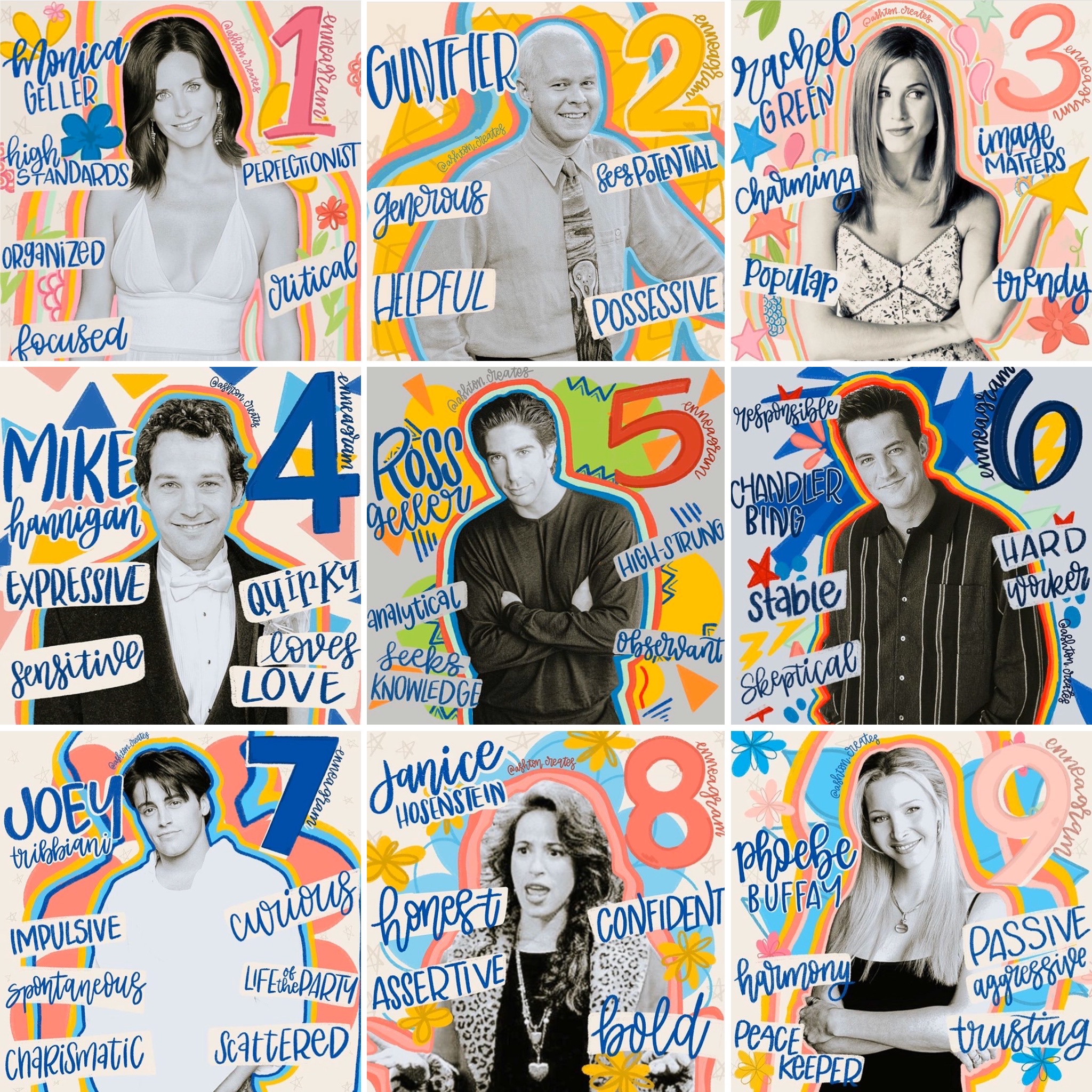
I am a personality type junkie and the Enneagram is my latest fix. I won’t lie about it.
Once upon a time I would have shyly told you I was a Scorpio. Later, INFJ was my chosen badge of honor. Now? Enneagram Type 4, baby. And all I want to do is talk about it.
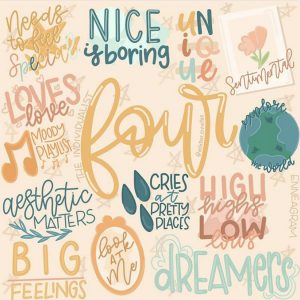 About six years ago I stumbled upon the Enneagram, and when I read about Type 4s, my stomach coiled in dread. How did they KNOW? I swear to you, it was like someone had read my mail–if by mail, I mean the diary entries written after someone gave me truth serum. Unlike the Myers-Briggs Type Indicator (which I will always love) that had confirmed for me the way I process information and show up in the world, this woowoo Enneagram magic was revealing my innermost motivations and drives—ones I didn’t even want to admit to myself. Part of me wanted to burn the book—what was this witchcraft—but the part of me that won out was the little girl inside me whispering “See? You’re not broken,” and “You’re not the only one.”
About six years ago I stumbled upon the Enneagram, and when I read about Type 4s, my stomach coiled in dread. How did they KNOW? I swear to you, it was like someone had read my mail–if by mail, I mean the diary entries written after someone gave me truth serum. Unlike the Myers-Briggs Type Indicator (which I will always love) that had confirmed for me the way I process information and show up in the world, this woowoo Enneagram magic was revealing my innermost motivations and drives—ones I didn’t even want to admit to myself. Part of me wanted to burn the book—what was this witchcraft—but the part of me that won out was the little girl inside me whispering “See? You’re not broken,” and “You’re not the only one.”
(In case you were wondering, that is a very 4ish response.)
Reading about my Enneagram type made me feel seen.
Today, you can hop on to Instagram and search “Enneagram” and you’ll be met with a long list of handles and hashtags that will act as a quick primer of the Enneagram stereotypes, but back when I first discovered the tool, its secrets were shrouded in mystery, reserved only for those seeking counsel and true personal development.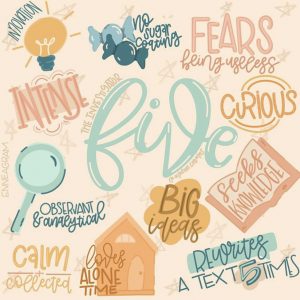
While it’s easier than ever to access information about the Enneagram, it’s a bit disheartening to see how it has been watered down for the masses. The Enneagram is so much more than memes about Friends characters or a list of personal descriptors. (But hey — stereotypes and caricatures help us learn, so please enjoy these images I snagged from @ashton.creates.)
I am no expert—if you truly want to master the Enneagram, it takes years of study, meditation, and good counsel—but because this tool has been so helpful for me personally, I humbly present to you the basics of my favorite tool for personal growth.
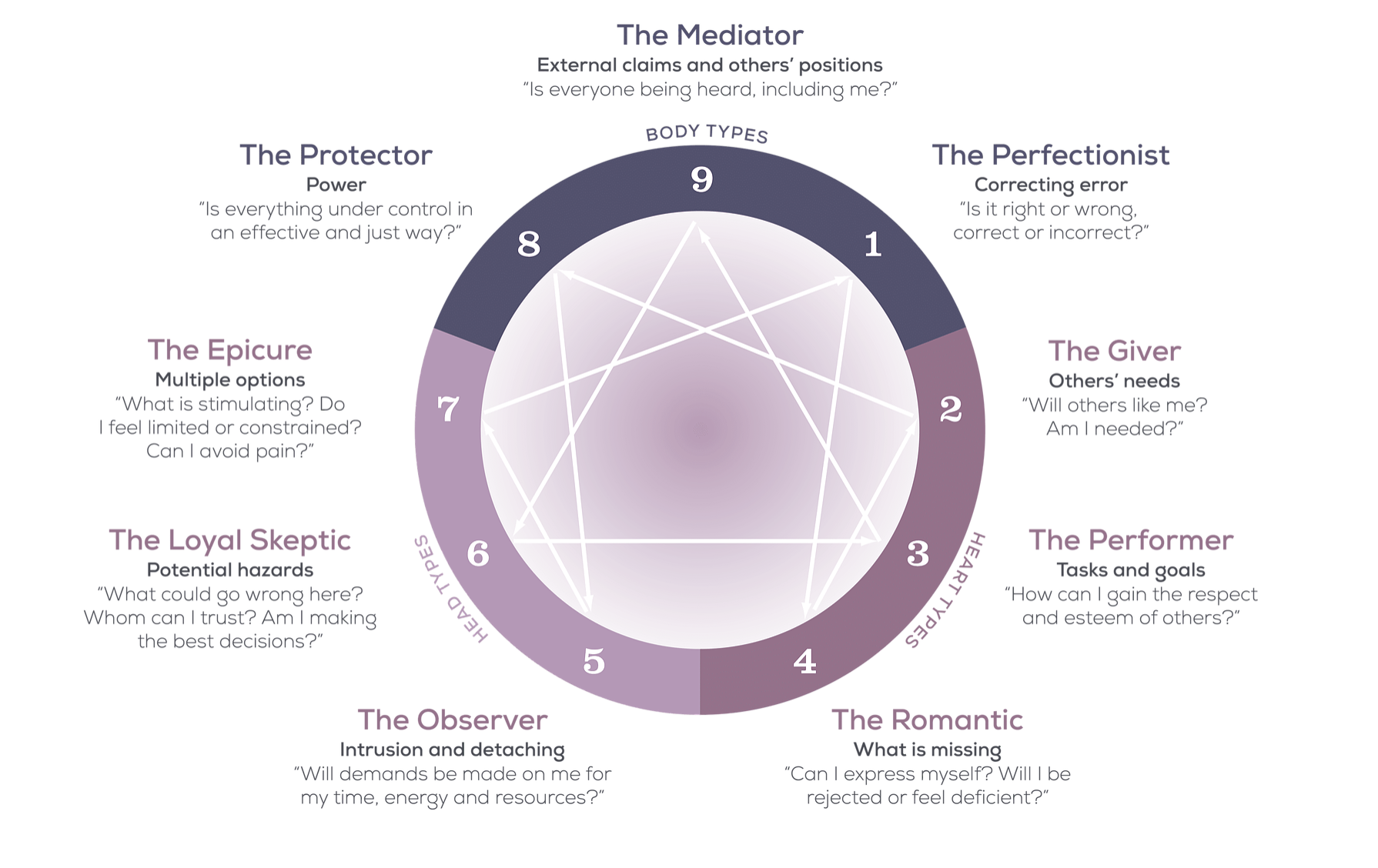
What does “Enneagram” mean?
In Greek, “Ennea” is nine, and “gram” is “that which is written or drawn.”
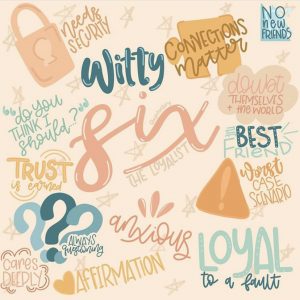 What is the Enneagram?
What is the Enneagram?
The Enneagram is an ancient wisdom tool, intended to help people wake up to their unconscious patterns (getting stuck in “Ego,” if you want to get psychological, getting stuck in a “sin pattern,” if you want to get religious)—to experience freedom, growth, and healing. As shown in the chart above, the tool maps out nine personas, or masks, that are generally solidified in childhood as our chosen survival strategy. While everyone is thought to flow through this chart depending on life season, health, and stress levels, we all have one core type that we tend to rely upon most often. The magic of the Enneagram is learning about what we hide from ourselves. It’s also about bravely facing this new knowledge and then choosing to think and act differently.
Not Just Pop-Psychology
It may be tempting to see the Enneagram as just another throwaway personality test, but here’s the thing: the Enneagram symbol has roots in antiquity and can be traced back at least as far as the works of Pythagoras. The philosophy behind the Enneagram contains components from mystical Judaism, Christianity, Islam, Taoism, Buddhism, and ancient Greek philosophy, and are even present in classic literature like Homer’s Odyssey and Dante’s Divine Comedy. The more you read about the Enneagram and its history, the more you’ll see how its conclusions stand the test of time.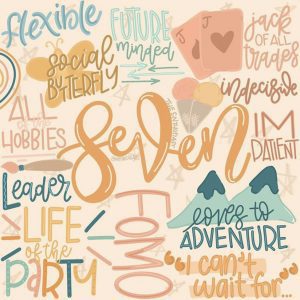
What are the 9 Enneagram Types?
Type 1—Reformer, Perfectionist: principled, purposeful, self-controlled, and perfectionistic.
Type 2—Helper, Giver — generous, demonstrative, people-pleasing, and possessive.
Type 3—Achiever, Performer—adaptable, excelling, driven, and image-conscious.
Type 4—Individualist, Romantic—expressive, dramatic, self-absorbed, and temperamental.
Type 5—Observer, Investigator: perceptive, innovative, secretive, and isolated.
Type 6—Loyalist, Loyal Skeptic: engaging, responsible, anxious, and suspicious.
Type 7—Enthusiast, Epicure: spontaneous, versatile, acquisitive, and scattered.
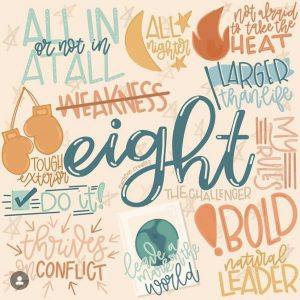 Type 8—Challenger, Protector: self-confident, decisive, willful, and confrontational.
Type 8—Challenger, Protector: self-confident, decisive, willful, and confrontational.
Type 9 —Peacemaker, Mediator: receptive, reassuring, complacent, and resigned.
*The names differ depending on which Enneagram tradition you’re working with
Learn your Enneagram Parenting Style Here
How do I determine my number?
There are tests you can take online (see below for links)—some much more comprehensive than others, and for those you have to pay—but the best answer I can give you is simply to begin studying the Enneagram. Read the descriptions of each type and see which one resonates the most. If you’re having trouble, ask yourself which number you despise, causes you pain, or makes you feel sick to your stomach. I hate to break it to you, but the one that makes you the most uncomfortable is likely the one you rely on the most (unless you’re a 7; Enthusiasts are usually pretty happy to read about all the things they already love about themselves).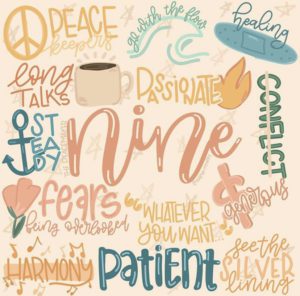
What are wings?
Wings are the types on either side of a person’s core number. We have the ability to lean on these wings, depending on our level of self-awareness. Usually a person leans on one wing more often than another, and this gives the core type a little extra flavor. Each of these wing combos has another name, to help distinguish how the type shows up. For instance, I am a 4, which means I am a Romantic, and my wings are 3 (Achiever) and 5 (Observer). I generally show up in the world as a 4w5 (the Bohemian), which is usually a more introverted and introspective 4 than the more flamboyant and success-oriented 4w3 (the Aristocrat).
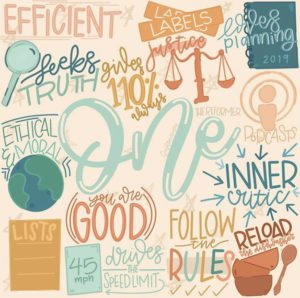 Is the Enneagram a religion?
Is the Enneagram a religion?
In short, no. There can be a significant spiritual component to growth using the Enneagram, and a variety of religious traditions have included the Enneagram as a tool to use alongside belief—very popular in progressive Christian circles today, the tool also has ties to some types of Sufism, the Kabbalah, and Buddhism. It’s important to make the distinction between doctrine and discipline—the Enneagram is like a lens with which to view our spiritual growth within our own worldview.
Can I fix my spouse (/friend/boss) if I know his or her number?
Like any other type of personal growth tool, the Enneagram is really geared toward enhancing an individual’s capacity to grow, not to arm that person with an arsenal to use against others. Having an understanding of each type and how it relates to each other can, however, help strengthen your relationships at home and at work.
For instance, it’s helpful for my husband and I to recognize the patterns that can develop between a cool and collected type 9 and an intensely passionate type 4. When we read a description of a relationship between 9s and 4s, we laughed as we wondered if the Enneagram Institute had bugged our house (a type 6 would not be laughing).
A word of caution: try not to type anyone other than yourself. Discovering type is a very personal process that can take time and a willingness to be completely honest with oneself.
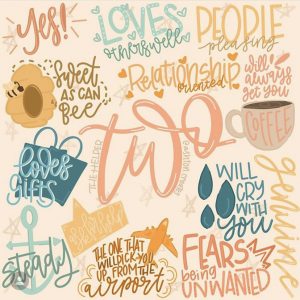
Will knowing the Enneagram help me be a better parent?
Undoubtedly, yes. Understanding the narrative you unconsciously tell yourself about life and your role in it will give you clarity around some of your blind spots–and help you offer compassion to your kids, who are likely different types than you. For instance, a Type 3 achieving parent might not naturally understand a child who always seems to be lost in her imagination, whereas a Type 9 peacemaker might have a hard time establishing clear boundaries with a kiddo who is strong-willed.
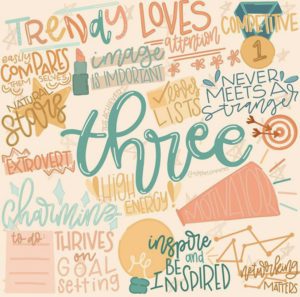 Those well-versed in the Enneagram recommend typing yourself and adjusting your parenting style according to the needs of your kids, rather than trying to type your children, especially when they are very young. We’ll do our kids a disservice if we don’t allow them access to the complexity of who they are at their essence. That said, I have my suspicions about my boys’ types, and I like to experiment with responding to them in ways that are helpful to those types, if only to see what sticks.
Those well-versed in the Enneagram recommend typing yourself and adjusting your parenting style according to the needs of your kids, rather than trying to type your children, especially when they are very young. We’ll do our kids a disservice if we don’t allow them access to the complexity of who they are at their essence. That said, I have my suspicions about my boys’ types, and I like to experiment with responding to them in ways that are helpful to those types, if only to see what sticks.
We’d love to hear from you: What are your thoughts on the Enneagram? Do you know your number? And most importantly: are you a Rachel or a Monica?
Here is just a sampling of some of my favorite Enneagram resources:
Enneagram Tests:
Riso-Hudson Enneagram Type Indicator
Integrative Enneagram Questionaire
Wagner Enneagram Personality Style Scales
True Self (includes tritypes)
Additional Resources
Personal Growth and Understanding
Discovering The Enneagram: An Ancient Tool For a New Spiritual Journey (Rohr)
The Wisdom of the Enneagram: The Complete Guide to Psychological and Spiritual Growth for the Nine Personality Types (Riso, Hudson)
The Sacred Enneagram: Finding Your Unique Path to Spiritual Growth (Heuretz)
The Complete Enneagram: 27 Paths to Greater Self-Knowledge (Chestnut)
The Road Back to You: An Enneagram Journey to Self-Discovery (Cron, Stabile)
On Relationships
The Path Between Us (Stabile)
Becoming Us: Using the Enneagram to Create a Thriving Gospel-Centered Marriage (McChord, McChord)
The Enneagram of Parenting: The 9 Types of Children and How to Raise Them Successfully (Wagele)
The 9 Types of Leadership: Mastering the Art of People in the 21st Century Workplace (Chestnut)
PODCASTS:
The Liturgists, “The Enneagram,” Episode 37
Sleeping at Last (check out Ryan’s songs about each Enneagram type!)










